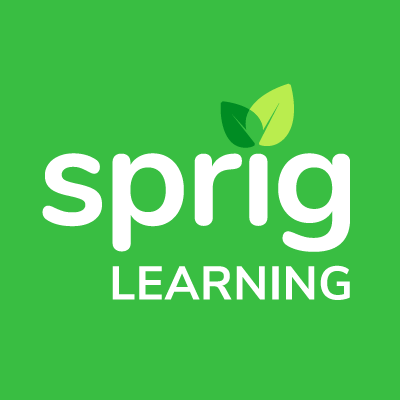I’ve been the principal at Bassano School for about three years now, but I’ve been on the data bandwagon for much longer. I realized about 15 years ago, when I was a director of education in Saskatchewan, that we needed to collect more data to find out what was going on with our students and to help identify areas of concern with their learning.
Teachers have been collecting data for years. They just didn’t necessarily call it data. They called it “tests” or “quizzes” or “projects,” and so on.
Nowadays, every teacher knows there’s a huge emphasis in education on assessment – and not just any assessment, but authentic assessment. We’re collecting information on outcomes and measuring students’ understanding towards those outcomes.
That trend has helped bring us to where we are today with data. My school division, Grasslands Public Schools, is saying we need more data to help learning and to produce evidence of success for our kids.
This emphasis on data has made collecting information on individual student learning more focused, purposeful and systematic than ever before. Ideally, you’re not only collecting the data, you’re also analyzing it so you can understand what has to be tweaked so everyone is learning in the classroom.
Getting data on early learners is especially critical because how else do you implement proper interventions for learning difficulties without accessing the data? In Alberta, we’ve been able to collect that data before kids get to kindergarten thanks to Alberta Education’s PUF (Program Unit Funding) program for children with disabilities or delays.
Standardized tests are not enough. You can’t just rely on that. In Alberta, for instance, our PATs (Provincial Achievement Tests), which are given to students in grades 6 and 9, are challenging for some kids. Based on those scores, sometimes the public perception is that students may not be doing well. So, you need to draw from multiple sources of data to show the true picture.
That especially applies to a place like Bassano School. Our population of 311 K -12 kids is pretty diverse. Some are from more affluent families. Others have a lower socio-economic status. Seventy-three of them are Indigenous students from the Siksika Nation. We also have a large agricultural community, with students coming from local grain farms and cattle ranches. There are also a growing number of ESL students. On top of that, we’re dealing with a generation of kids who are more entertained by video games, not the idea of coming to school and sitting in a classroom.
Despite increasing diversity – or because of it – most public schools in Canada follow the philosophy of inclusive education, which makes individualized instruction essential.
Add it all up and teaching is more challenging than ever. Teachers by nature are very busy. They feel the pressure to meet curriculum goals, and they’re doing their best to help their students learn. In the hustle and bustle of everything that’s required, throwing student data collection and analysis into the mix seems like a burden for some. They may do it out of a sense of duty, without really seeing the benefits. Others are concerned it could be used against them.
And that’s what we’re working on now. We do a lot of talking with our teachers about data-driven decision making in the classroom. Because the truth is that sometimes teachers neglect to step back and look at what they’re doing – and what could be adjusted to get better results. Data tools can help inform them about what kind of adjustments they need to make in class with each student. And, ultimately, that can save time and lead to better results.
In professional learning communities (PLC’s) and in other ways, administrators like me need to make student data collection and analysis really practical and useful for teachers and take it out of the context of just being a bunch of numbers. It should never be about competing with other schools. It should be about making your school better for your students. It’s really all about how this is going to inform how we make solid decisions for our kids to make sure they’re learning effectively.
Right now, we’re doing our data collection and analysis manually, using box plots, bar graphs and histograms. We’re planning to introduce education technology to help our efforts, but we’re proceeding cautiously. That technology will have to offer ironclad security for our student data. And it’ll have to be something that can be easily integrated into what we’re already doing so it makes the whole process simpler – and is not just creating more work.
Some teachers are already seeing that potential. In a 2018 report I co-authored with Sprig Learning, 52 per cent of teachers surveyed said they have already experienced how technology helped them provide more individualized instruction.
Another recent survey was even more encouraging. In educational publisher Houghton Mifflin Harcourt’s 2018 Educator Confidence Report, about 96 per cent of teachers and administrators questioned in the United States said they’ve already seen how education technology and data can improve learning. And 44 per cent said they’ve also experienced time savings because of educational technology. However, 72 per cent remarked that the potential for technology to improve daily workflows has not yet been fully realized.
At our school, we would also like our data collection to include parents, caregivers and families because a lot of learning happens outside the classroom, and that’s such an important piece. It’s a matter of getting that engagement from parents so they can play a part. We are exploring how to use Sprig Learning’s holistic programs that incorporate multiple perspectives of student learning, including learning that occurs in the home, school, and community life. All done using Sprig’s online platform and iOS apps and assessment tools.
We’re entering an exciting time for data-driven decision making in the classroom, and, at Bassano School, we feel we’re moving in the right direction. Wish us luck! Our students will thank you.

Vince Hill, Principal, Grasslands School Division
Currently, he is principal in rural Alberta at Bassano School.
